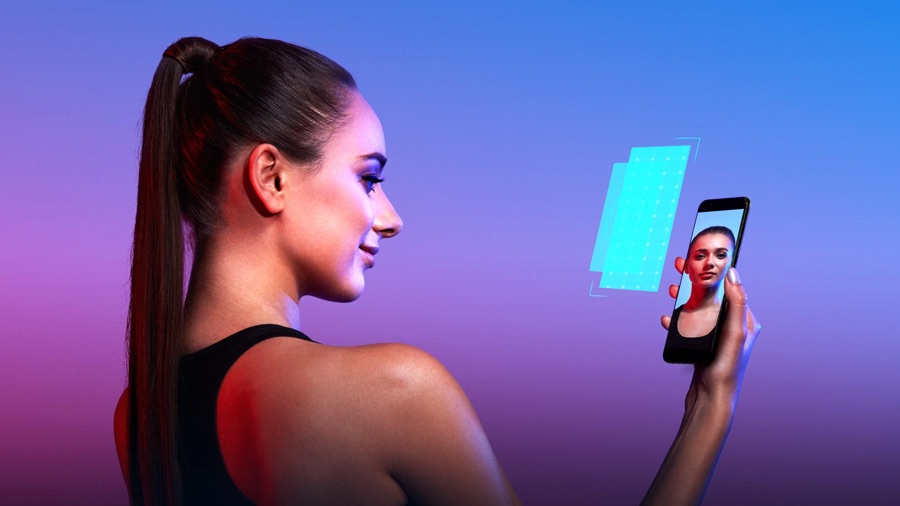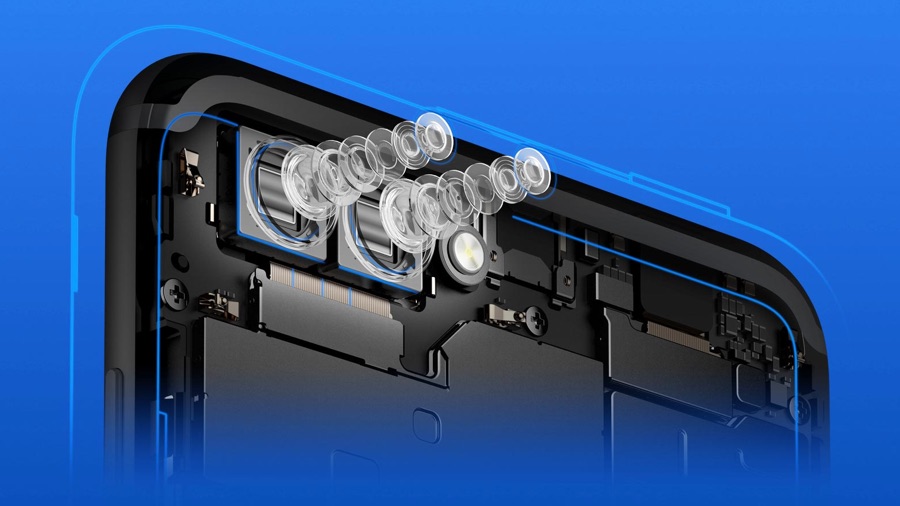
This is a sponsored article, in association with Honor.
Sometimes it seems that smartphone tech has peaked. Most of this year’s flagship phones will be slightly more powerful versions of last year’s much-hyped models: a few extra megapixels here, a few more megahertz there.
But some firms are daring to think big, to imagine technology that’s much more exciting than a slightly tweaked version of something you can already buy today.
- 7 things we hope Google Home will be able to do in five years
- 5 great AI-powered home devices that will improve your life today
Take Honor. It doesn’t just want to make great phones. It wants to change the way we think about phones altogether. Forget smartphones: Honor’s imagining superphones, and it’s already assembled some of the key tech that’ll drive the next generation of digital devices.
Here are five amazing things Honor’s cooking up in its labs.
1. Bionic eyes
No matter how many megapixels you give them, normal smartphone cameras don’t see things like people do. Doubling them up helps — a phone with two lenses can have binocular vision just like we humans have — but they still see the world in 2D. That’s why Honor also uses a technology called structured light.
Structured light is used in 3D scanning. By projecting a pattern onto an object and seeing how that pattern deforms you can create a 3D model of anything: an object, a place or a person.

Normal phones don’t see the world like human eyes do. Honor combines multiple technologies to create cameras that do
By combining binocular vision with structured light — and taking advantage of artificial intelligence, which we’ll come to in a moment — Honor is creating bionic eyes: cameras that see in 3D with incredible accuracy and reliability.
That opens up some really interesting possibilities that go way beyond facial recognition, such as gesture control and other 3D interactions.
2. Incredibly clever cameras
Wouldn’t it be great if your camera knew the difference between a cat and a dog, food and flowers, portraits and paintings? The camera in the Honor View 10 does. It takes the clever camera tech we’ve just discussed and adds artificial intelligence to take photos like the pros do.

Two lenses plus artificial intelligence makes one incredibly clever camera
We’re not talking about a couple of presets or some photo filters here. The camera app sends real-time data to something called a Neural Network Processing Unit (NPU) to identify what you’re pointing your phone at.
By doing so it can then adjust the colour, contrast, brightness, exposure and other settings to get the best possible photo.
That’s not all. It can change the background in a selfie without losing any image quality, apply a range of real-time lighting effects and even replace your face altogether for some real-time virtual cosplay.
3. Sync play
We’re glad Honor dropped the official name for this: multi-terminal media play sounds much less exciting — and this is pretty exciting.
Sync Play enables multiple devices to play the same music simultaneously, even when they’re far apart — and it adjusts the timing so that each device’s output reaches your ears at the right time.
If you move around, Sync Play adjusts everything accordingly. In effect, it turns the room or building you’re in into a single sound system. It’s something you really need to hear to appreciate just how mind-bogglingly brilliant it is.
4. Babel Fish
You can’t quite stick a Honor View 10 in your ear, but we’re getting close: Honor’s engineers have developed real-time language translation that’s three times faster than previous cutting-edge translation tech, and it works across more than fifty languages already.
Microsoft’s Translator for Android app has been optimised for Honor hardware: its offline mode has the same extraordinary power that other devices can’t get without connecting to the cloud.

We’re reaching the end of the smartphone era. Next up: the truly intelligent superphone
5. Neural-Network Processing Units
The one thing all these things have in common is that they require serious processing power. That’s why Honor has developed a dedicated NPU — Neural-Network Processing Unit — to run alongside its already incredibly powerful Kirin 970 chipset.
By running AI functions in hardware rather than software a device such as the Honor View 10 can do extraordinary things, such as run image recognition on photos at a rate of 2,000 per minute.
What we’re seeing here is a shift: first we had phones, then feature phones, then smart phones. And now artificial intelligence is bringing us the superphone: phones that aren’t just smart, but genuinely intelligent. And that’s going to change everything.
Discover more about AI and the future of phones at Honor’s website.
#Honor #ForTheBrave
AI Week is brought to you in association with Honor.
Get all the latest news, reviews, deals and buying guides on gorgeous tech, home and active products from the T3 experts

For 25 years T3 has been the place to go when you need a gadget. From the incredibly useful, to the flat out beautiful T3 has covered it all. We're here to make your life better by bringing you the latest news, reviewing the products you want to buy and hunting for the best deals. You can follow us on Twitter, Facebook and Instagram. We also have a monthly magazine which you can buy in newsagents or subscribe to online – print and digital versions available.
-
 Think your room is too small for a big TV? Think again!
Think your room is too small for a big TV? Think again!Now’s the time to supersize your set with a premium QD-Mini LED TV upgrade
-
 Want to level up your gaming? These are the best consoles and games for every type of player
Want to level up your gaming? These are the best consoles and games for every type of playerChoose your next gaming adventure with this handy guide
-
 UGREEN x Genshin Impact: power up your gaming journey
UGREEN x Genshin Impact: power up your gaming journeyAnd grab the chance to win a limited edition UGREEN x Genshin Impact Kinich Collectible Gift Box
-
 5 Surprising Ways a Home Printer Can Save Your Sanity (and Your Family’s!)
5 Surprising Ways a Home Printer Can Save Your Sanity (and Your Family’s!)Modern life is hectic, but a home printer can help. Discover how HP’s eco-friendly, intuitive machines can simplify your household
-
 The Gamer’s Survival Guide: Dominate every challenge with the MSI Stealth A16 AI+, powered by the AMD Ryzen™ AI 300 Series Processor
The Gamer’s Survival Guide: Dominate every challenge with the MSI Stealth A16 AI+, powered by the AMD Ryzen™ AI 300 Series ProcessorMaster your gaming and creative battles with the MSI Stealth A16 AI+, featuring the AMD Ryzen™ AI 300 Series Processor, a portable powerhouse packed with cutting-edge AI technology, sleek design, and unstoppable performance
-
 Why the HUAWEI WATCH GT 5 will steal the show under your tree this Holiday Season
Why the HUAWEI WATCH GT 5 will steal the show under your tree this Holiday SeasonUnder the tree or on the wrist, the HUAWEI WATCH GT 5 shines this Christmas
-
 Unwrap the Joy of the Holidays with the UGREEN Uno Series
Unwrap the Joy of the Holidays with the UGREEN Uno SeriesFrom family movie marathons to holiday road trips, the UGREEN Uno Series brings festive cheer and seamless tech solutions to power your most magical moments this Christmas.
-
 Tech the Halls: Holiday Shopping Made Easy with These Picks from Huawei
Tech the Halls: Holiday Shopping Made Easy with These Picks from HuaweiGive the gift of innovation this Christmas with Huawei


